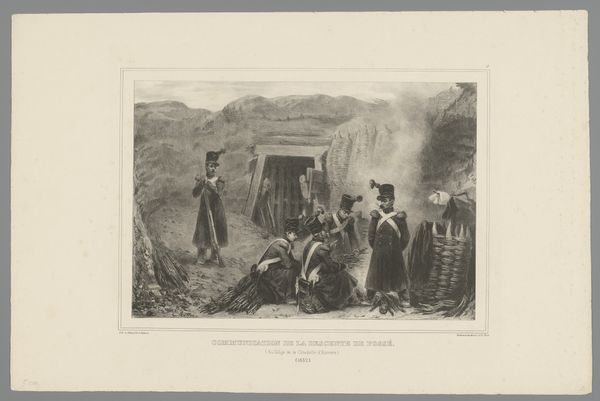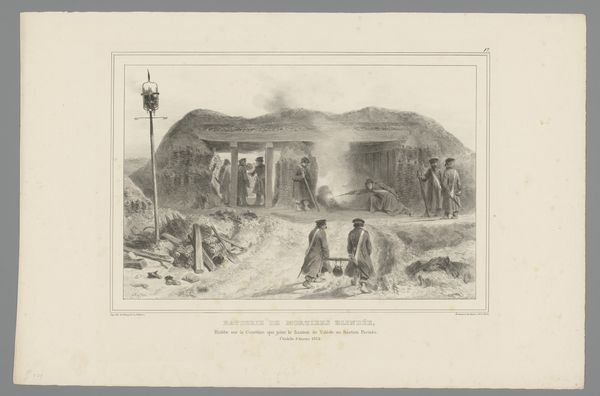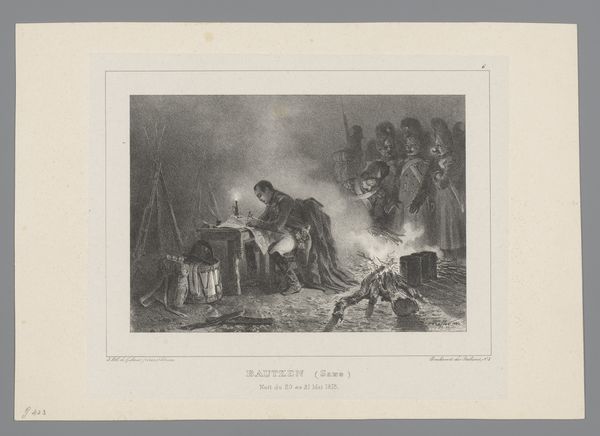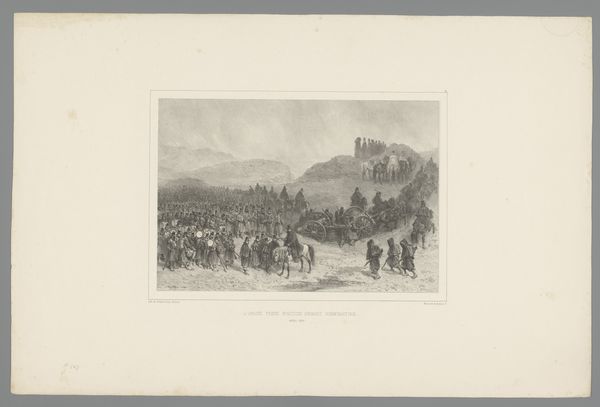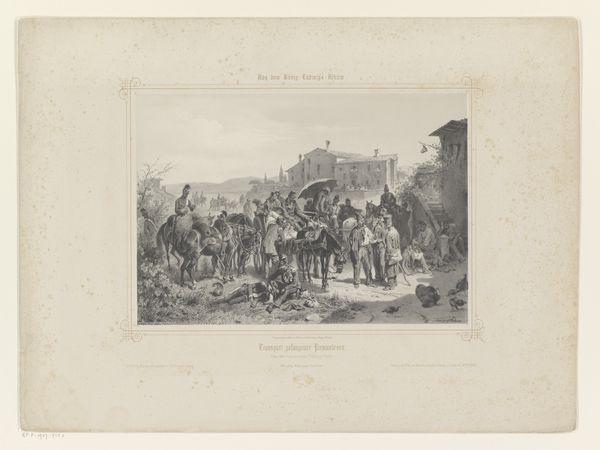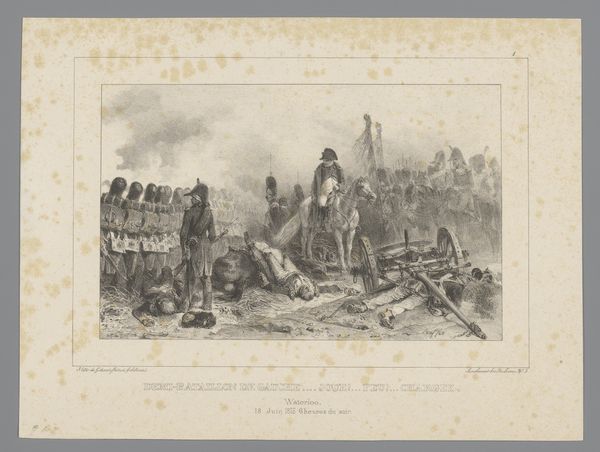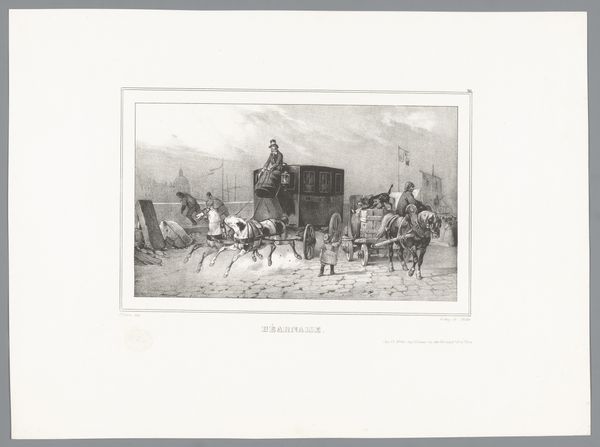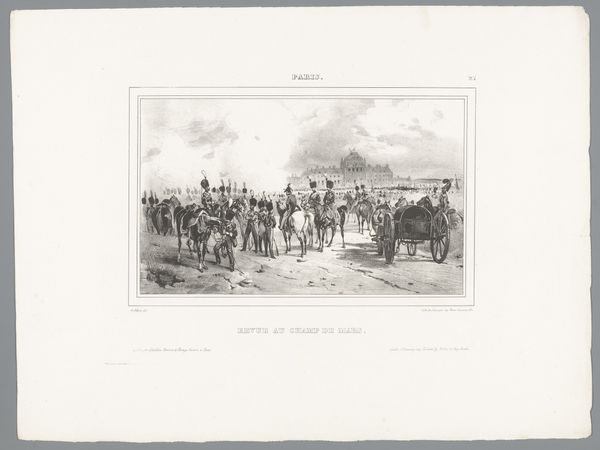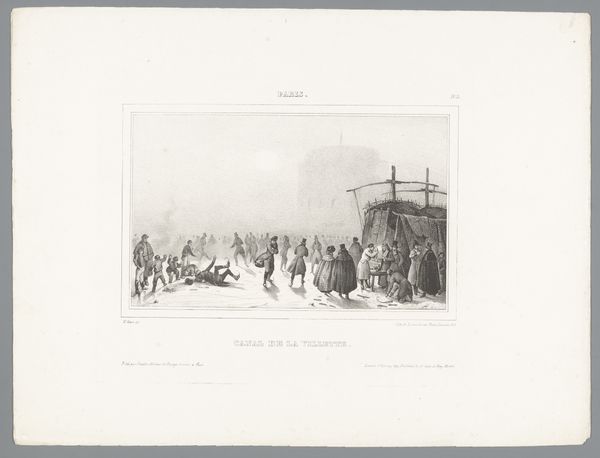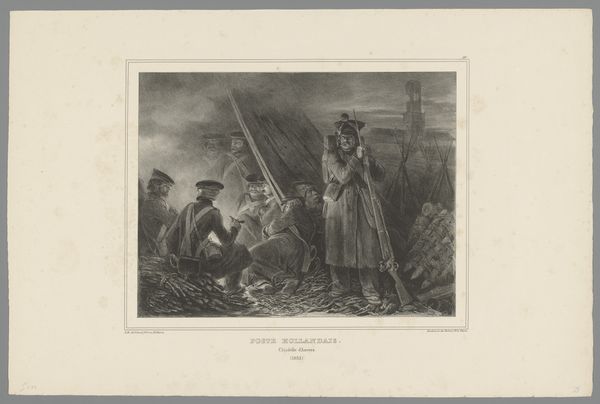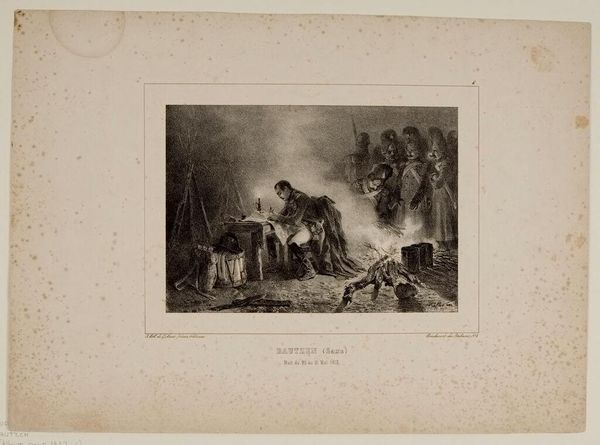
drawing, lithograph, print
#
drawing
#
lithograph
#
ink paper printed
# print
#
landscape
#
history-painting
#
realism
Dimensions: height 362 mm, width 554 mm
Copyright: Rijks Museum: Open Domain
Curator: Before us hangs Auguste Raffet's lithograph, "Schutters achter een borstwering, 1832," created in 1833. I am immediately struck by its palpable sense of apprehension and anticipation. Editor: Lithography allowed for a democratic circulation of imagery and this work exemplifies how process can bring accessibility and change viewer habits to a mass-produced scene depicting the bourgeois citizen militias behind makeshift fortification during wartime. The use of ink, paper and printed design adds to a discussion around value and art object in post revolution society. Curator: Precisely! Observe the intricate tonal gradations achieved with the lithographic crayon; how Raffet manipulates light and shadow to define the figures and landscape. It evokes a stark and powerful moment in Realism history, effectively conveying the anxiety before conflict, but is not strictly about war! It examines national unity after the end of Napoleon wars. Editor: Yes, but this image also prompts reflection on labor conditions required for mass production – the anonymous stonecutter crafting a lithographic limestone, the printers ensuring each impression is consistent to make many versions for larger consumption! And those involved laborers must be put into perspective, considering it happened amidst tumultuous societal transformation and growing demands for rights that led straight to socialist theory. Curator: Yet one cannot deny the emotional resonance conveyed via sophisticated chiaroscuro, enhancing realism for dramatic tension! Note too its horizon and rigid vertical organization across many military personnel behind. It pushes against strict aesthetic rules; and suggests conflict between rational artistic traditions alongside emergent liberal ideologies through careful structural elements contributing powerfully impactful overall. Editor: That very structure you are describing emphasizes an army assembled in service of something greater than just pure composition – power residing not solely in aesthetic appeal; that its lithographic mass distribution shaped a very tangible impact empowering ordinary citizens with tangible ways to shape opinion beyond exclusive salon culture and reshape historical outcomes with distributed knowledge which speaks powerfully regarding democratizing force within reach. Curator: A persuasive perspective demonstrating that Raffet has moved beyond pure representation toward engaging with complex issues confronting his audiences at a deep level Editor: Indeed -- demonstrating not just what this artwork depicts through structure-oriented analysis—but how lithography's democratized image circulation catalyzed action back then just imagine such multiplied potency translated now within our modern information streams… powerful medium then; even stronger force nowadays because these materials and mass distributions techniques have reshaped art and knowledge sharing so much now and forever ahead!!
Comments
No comments
Be the first to comment and join the conversation on the ultimate creative platform.

